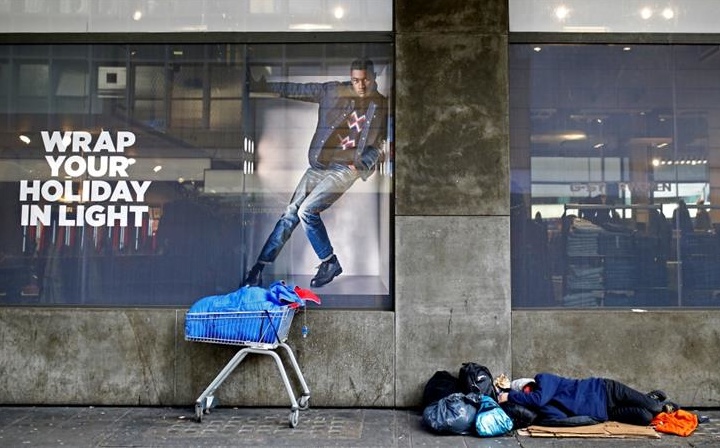“We want to care, but the way we engage suggests we have an aversion to the homeless.”
Originally published as a Birmingham Brief:
If you are homeless and sleeping rough in the UK, your life expectancy is halved.
The average British woman has a life expectancy of 81 today. For a female who is either street homeless or in an emergency shelter, it’s 43.
According to the Office of National Statistics, 726 homeless people died in the UK last year, a 22% increase on 2017. With 23 deaths, Birmingham had the highest recorded number for any local authority in England and Wales. These figures are the minimum level of mortality; the true totals are likely to be much higher.
Some of the coverage these statistics has been accompanied by images of rough sleepers which presents them as passive, alien, dehumanized and diseased. Many reports, after expressing anxiety, have emphasized that two in five deaths are due to drug poisoning, further stigmatizing the victim.
And therein, beyond the numbers, is the problem: we want to care, but the manner in which we engage suggests we have an aversion to the homeless.
There is no longitudinal data for homeless deaths beyond 2013, but for a historian of homelessness in modern Britain, death on the streets (or in the countryside) is no surprise. The discovery of an unknown body of no fixed abode were regularly described by newspapers from at least the mid-19th century. Their portrayal in part explains the ambiguity of modern public responses to the homeless, with the suspicion that many find themselves in their predicament because of personal fault or poor lifestyle choices.
Two examples are illuminating. An unknown elderly gentleman was found dead in a haystack in 1906 near Cropwell Bishop, but presumed on the basis of his clothing to be a tramp. The police decided to circulate a photograph of the deceased, and a laundress from near Bath claimed the body as that of her absent husband. With the identification, the press reportage transformed the man from an idle tramp to genuine worker, a man “on the road” seeking work to support his wife, a man who left behind a “well-liked” and “respectable” widow.
In the same year, during a ferocious winter storm, a family allowed an elderly female vagrant to shelter in their pigsty. They denied her access to their home for fear she was verminous, but provided hot food and drink morning and night. When it was apparent that the woman was succumbing to exposure, the police were called, but too late to save her life.
There is a difficulty with the application of the label “homeless” to these death, now and then. The rough sleeper and emergency hostel user are only the most extreme form of the homelessness spectrum. The reportage of statistics simply reinforces the message for the public that homelessness is absolute rooflessness. It overlooks the thousands of families who are in temporary emergency accommodation or the individuals who are sofa surfing, with the risks to health and of morbidity that these secondary forms of homelessness pose.

